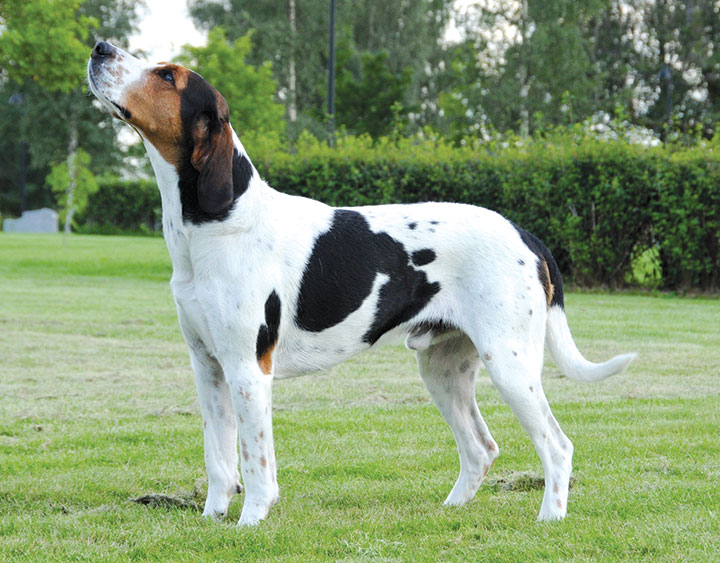This Norwegian scent hound is named after the area of its origin: the city of Halden in southern Norway, right on the Swedish border. The Halden Hound was created there in the latter half of the 19th century by crossing foxhounds from England, Beagles and local scent hounds.

Photographer: Vibeke Brath
Early on, these breeding efforts gave a rather uniform type of scent hound, thus providing the basis for a new breed. However, there were always problems linked to the narrow breeding basis. An outbreak of canine parvovirus in 1931 and the Second World War nearly wiped out the Halden Hound, but a few committed indivi¬duals started breeding the dog again after the war. In 1952, the Halden Hound was approved as a separate breed.
Thereupon, interest in the breed grew and numerous champions were made up. However, the breed’s popularity started to dwindle from the mid-1950s, and has thus never been large in numbers. Even though the breeding population always has been small, no considerable extent of hereditary diseases (such as HD) has ever been recorded in the breed. In recent years, the number of Halden Hound puppies registered by the Norwegian Kennel Club varied between 7 and 21 per year. This figure is considered to be threatingly low, and must be increased considerably if a viable future shall be ensured for the breed.
Appearance and size
The Halden Hound is a medium-sized, rectangular dog, strongly built, but should not appear heavy. The head is medium-sized and the skull slightly domed. The occiput and stop are not very pronounced. Ears are medium high set and hanging. Rather long and strong neck. The tail extends approximately to the hock joint and is carried low. A dense undercoat is covered by a short, straight overcoat. Coat colour is usually white with black patches and tan shadings on head and legs. The desired height at the withers is 52-60 cm for males, 50-58 for bitches.
Utilization
The Halden Hound is a good hunting dog with a strong hunting desire and a friendly nature. The breed is characterised by strong nerves and by being especially sociable and trusting. Many Halden Hounds have done very well in hunting trials. They can thus be characterised as an excellent combination of a hunting and companion dog. Due to its good temperament and open nature, the breed is also easy to train.
Breed registration statistics
Below you can find the registration statistics for the Halden Hound in the Nordic countries from 1990 onwards.
| | Norway | Denmark | Finland | Iceland | Sweden |
|---|
| 2015 |
14 |
0 |
0 |
0 |
0 |
|---|
| 2010 |
20 |
0 |
0 |
0 |
0 |
|---|
| 2005 |
21 |
0 |
0 |
0 |
0 |
|---|
| 2000 |
18 |
0 |
0 |
0 |
0 |
|---|
| 1995 |
13 |
0 |
0 |
0 |
0 |
|---|
| 1990 |
9 |
0 |
0 |
0 |
0 |
|---|